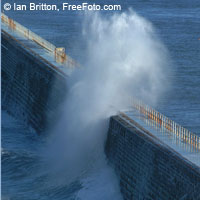Scientists study Sumatra seabed for causes of tsunami
A team of international researchers, including French and UK scientists, is carrying out seismic studies of the seabed north-west of Sumatra. On 26 December 2004 a massive earthquake at the site triggered the tsunami which swept across the Indian Ocean and slammed into the coastlines of countries as far away as Somalia. Over 230,000 people died in the disaster, and many more were left homeless as entire villages were simply swept away. The scientists aim to improve our understanding of the causes of the immense earthquake, and how the movements within the Earth were transferred to the seabed and then on to the water column, thereby creating the devastating tsunami. The scientists will use a method called seismic refraction to study the seabed. This involves sending a seismic wave towards the bottom of the ocean. At the geological interfaces, part of the wave is reflected and part is refracted. The parts of the wave that are refracted are diverted upwards and measured by seismometers placed on the seabed. The recordings will enable the researchers to determine the speed with which the seismic wave moves through the different geological layers. The results will be combined with those from another study to obtain the structure of the subduction zone. The 2004 earthquake measured 9.3 on the Richter scale, making it one of the largest ever recorded. The Indian tectonic plate is moving beneath the Burman plate at over five centimetres a year on average. However, at certain points friction prevents the plates from sliding over each other smoothly. It is thought that in this case the friction built up for one to three centuries. When the plates eventually ruptured, causing the earthquake, the seabed rose an average of five metres along 1,300 kilometres. This movement was transferred to the water column, leading to the tsunami. With the results of their research, the scientists hope to understand how the rupture spread from the epicentre to the sea floor, and in particular the geometry of the faults involved. In the future it will therefore be possible to put together information on the sea floor with details of the deeper structure of the zone. The scientists hope their research will help them to define measures to reduce the dramatic consequences of future large earthquakes.
Countries
France, United Kingdom



